Exploring the street food scene of any country is always an eye opening experience.
You might stumble upon unique delicacies made from the simplest ingredients, or ordinary snacks that are made in extraordinary ways.
We’ve compiled just a few street snacks made in Asia that might just tickle your taste buds…
1. Thailand: Ice Cream Rolls
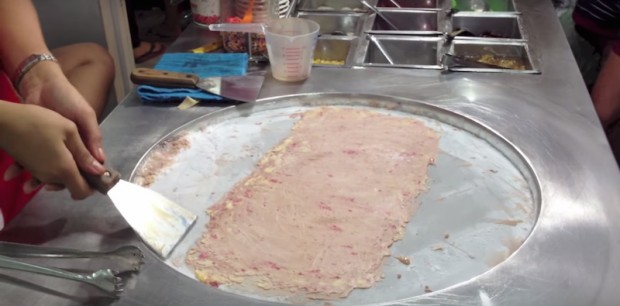
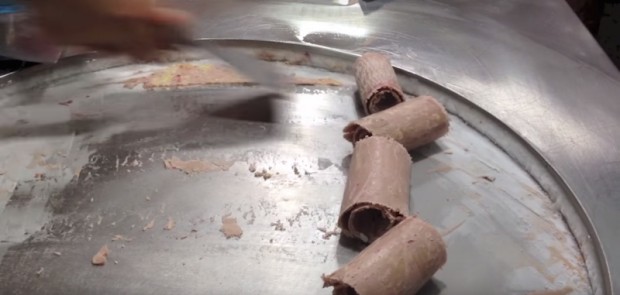
Taking over social media like a storm, and even hitting the international publications, Thailand’s famous ice cream rolls have left many netizens in awe.
Making these handmade rolls ain’t a child’s play, especially so when you have to attend to dozens of customers every hour. Requiring speed, precision and a heart for food, the stall vendors find themselves in their own rhythmic fashion each day rapidly chopping berries into a milky pulp on a cold surface.
Also read: 15 Delicious Street Food in Bangkok
2. Taiwan: Popiah Ice Cream
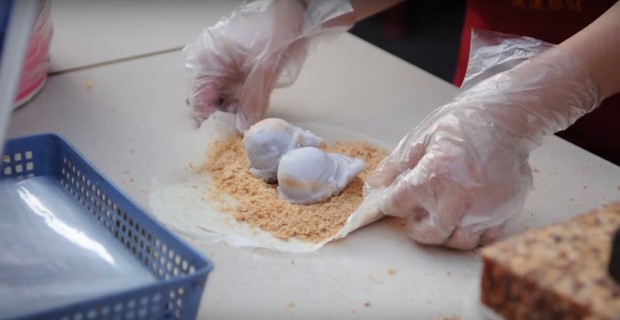
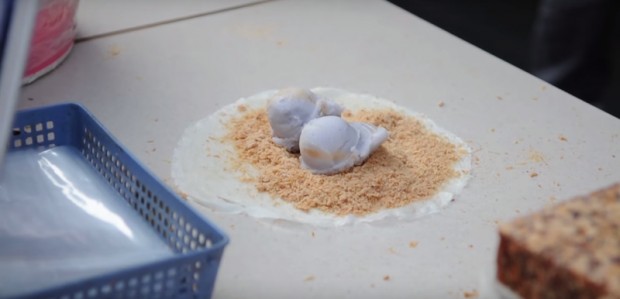
Popular among the Taiwanese and tourists alike, these Yilan-originated popiah are a jolly good bundle of two taro ice cream scoops and peanut candy, which is grounded right in front of customers. Some even add maltose and celery!
Let the cold smooth ice cream melt in your mouth and taste the crunchy bits of peanut candy in just a bite!
3. India: Roller Ice Cream
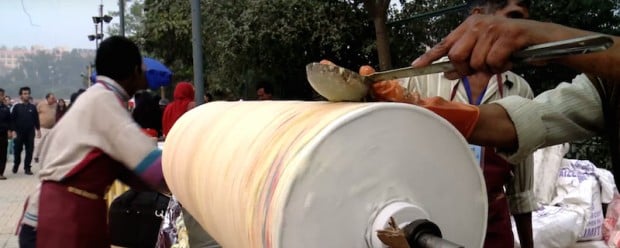
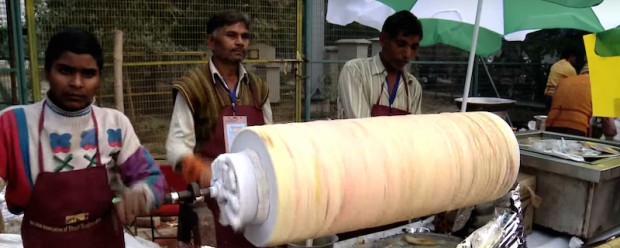
This is the last ice cream entry, we promise!
Though we can’t be sure if the Indians did it before the Thais, the Indian roller ice creams seem pretty creative as well! In a shape of a drum, a huge slab of ice cream rotates slowly and all you need to do is scrape layers of ice cream onto your bowl. Perhaps tell the vendor you want to add some fruity zest to your dessert!
If you ever attend an Indian wedding in any part of the country, chances are you might find a similar ice cream booth specially catered for guests among the other delectable Indian dishes.
4. China: Chinese Cotton Candy
Think cotton candy. Think China. This could be a perfect alternative to the ordinary bouquet of flowers to present to your better half. Of course, if she has a sweet tooth!
The cotton candy craftsmen sure know how to work the sugar. It’s too beautiful to be eaten!
5. Korea: Honey Strings
This street vendor shows this customers how to make 16,000 honey strings from one block of honey and corn starch. They can add peanut, almond or walnut powder as toppings.
This Korean is almost as sweet as his honey – his adorable commentary will leave you smiling for sure!
6. Vietnam: Traditional Thread Candy
Kẹo chỉ translates to ‘candy thread’ and true to its name, it is made of thin, long strands of sugar candy. They are placed on rice paper, topped with shreds of coconut, bits of roasted peanut and a dollop of condensed milk.
This traditional Vietnamese candy was commonly sold by street vendors in the past.
7. Philippines: Street Buko
You might question the hygiene of this street buko (coconut) preparation, but heck, it’s part of the experience! Roam around the streets of Manila and you can easily spot push carts selling these street coconuts.
Don’t indulge too much because “the coconut-nut is a giant nut, if you eat too much, you’ll get very fat!”, as this popular local song goes.
Also read: 25 Popular Street Food & Snacks to Try in the Philippines
8. Japan: Omurice

A western-influenced dish of the Japanese cuisine, the omurice consists of fried rice topped with a fluffy omelette, of which the latter requires precision and skills to be able to achieve the consistency. As the chef places the omelette onto a pile of rice delicately placed in the middle of the plate, he gently slices the omelette into half, unveiling the silky smooth texture within. While omurice may be served in a variety of ways, this one is as unique as it can get!
Also read: 12 Underrated Foods You Should Never Leave Japan Without Trying
9. Pakistan: Rumali Roti
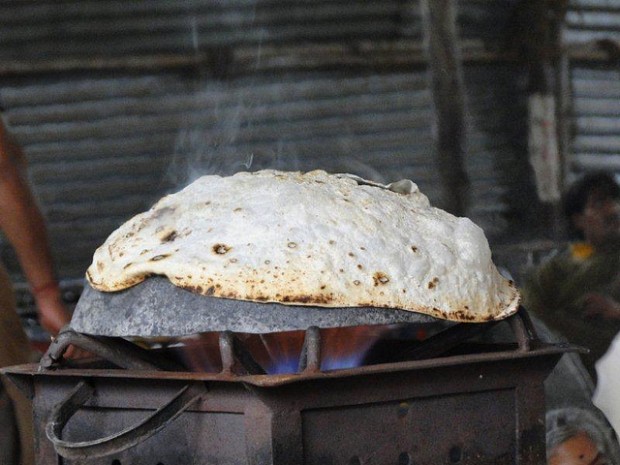 Image credit: Vijay Patil
Image credit: Vijay Patil
The rumali roti is a thin flatbread popular in northern India and Pakistan. As a traditional element of the Mughal cuisine, the roti, made from a combination of whole and white wheat flour, is supple, and cooked on an inverted Indian griddle, best over burning wood or coal. It is then served folded like a handkerchief, the meaning behind “rumal”. Although the size of the rumali roti is usually visibly larger than the usual chapattis, in several provinces of Pakistan, vendors make far larger flatbreads and this requires intense use of the arms and hand.
Moreover, in the Bannu locality of Khyber Pakhtunkhwa, marriage ceremonies involve a myriad of customs and traditions, one of them include the preparation of the rumali roti. It has been said that only one bread maker with an assistant is allowed to prepare the flatbreads for hundreds of people.
10. China: Chinese Sugar Painting
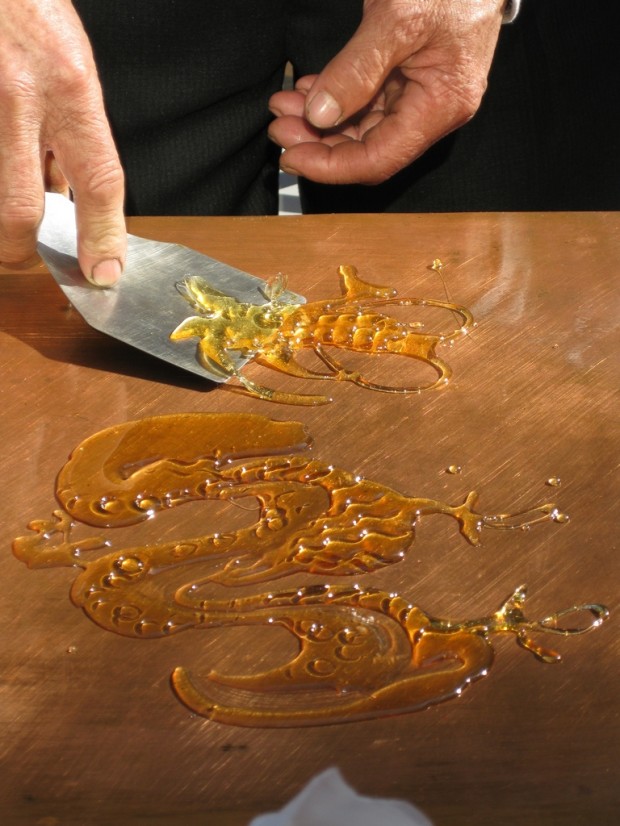 Image credit: Andrea Lai
Image credit: Andrea Lai
Chinese sugar painting is a folk art that has been assumed to be originated from the Ming Dynasty when religious rituals required the use of tiny sugar-made animals. It later gained prominence in the Qing Dynasty.
These two-dimensional snacks are popular among younger children and it has always been an amazing sight witnessing the display of fine artistry with just hot liquid sugar, a small ladle and a flat surface. These figures can range from dragons and snakes to birds and butterflies. Customers can also spin a wheel to select which animal they wish to have prepared.
Check out the size in the video, which also includes the bread maker inscribing a message onto the roti.
Also read: This is What Breakfast Looks Like in Different Parts of Asia
There are bound to be much more unique street snacks around Asia, and even more unique are their preparation methods. Share them with us if you know any!






